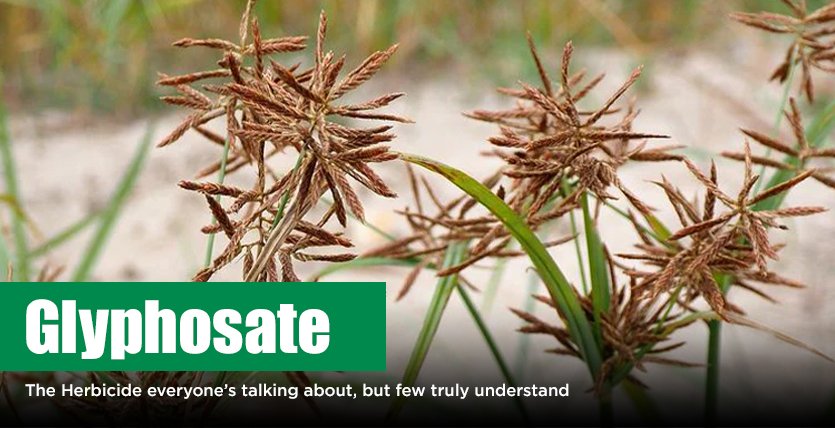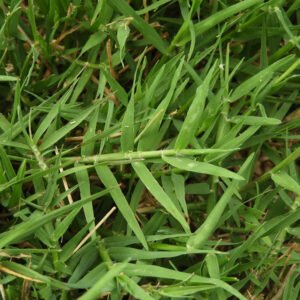When it comes to managing tough weeds in farms, one name always pops up – Glyphosate. It’s one of the most widely used herbicides in the world, and there’s a good reason why. It is effective, economical and works on a broad range of weeds. But how exactly it works, what makes it different from other herbicides, and why should growers or agri-brands care about the salt forms like Ammonium Salt or Isopropylamine Salt? Let’s break it all down in this blog.
What is Glyphosate?
It is a non-selective, systemic herbicide. That means it doesn’t target just one type of weed. It works on a large group of weeds including annual, perennial, broadleaf and grassy weeds. Non-selective means it kills most plants it touches, so it should only be sprayed carefully where weeds are unwanted.
Being systemic means after application, Glyphosate travels inside the plant, from leaves down to roots. This is important. Because instead of just burning the top part of the weed, it kills it from inside, including the root. So regrowth is minimized. That’s why it has become a go-to solution especially in non-crop areas, orchards, fallow lands, and before sowing any crop.
How Does Glyphosate Work?
It blocks a specific enzyme in the plant called EPSP synthase. This enzyme is part of a pathway that helps plants make amino acids like phenylalanine, tyrosine and tryptophan. Without these, the plant cannot survive. So when it gets absorbed, the plant’s internal factory breaks down, and slowly, the plant withers and dies.
This process might take 3 to 7 days depending on the weed species and weather. But it’s very reliable. Even tough perennial weeds like Cynodon (doob grass), Motha (nut sedge), and even some woody shrubs can be controlled with proper dosage.
Different Formulations of Glyphosate
Now, this doesn’t come in only one form. There are different salt forms and formulations available. Peptech Biosciences offer two main types:
Let’s understand them both and when to use which one.
1. Ammonium Salt of Glyphosate 71% SG
This is a high-strength formulation in soluble granule form. It contains 71% of Glyphosate in ammonium salt form. It is designed to give a stronger and longer residual effect, especially suitable for perennial and woody weeds.
Key points:
- Better absorption and faster action compared to liquid forms.
- Less drift problem during spraying because of granule dilution.
- High solubility in water, leaves no residue.
- Recommended where long-term weed control is needed, like railway tracks, roadsides, and tea and rubber plantations.
2. Glyphosate 41% SL
This is the more common, standard formulation. It comes as a soluble liquid with 41% active ingredient. It is based on the isopropylamine salt of Glyphosate.
Key points:
- Affordable and widely used by farmers in India.
- Suitable for normal weeds in fallow land, bunds, and before sowing crops.
- Can be used in zero tillage farming for wheat after rice.
- Has good compatibility with spray tank mixtures.
Comparison Table: 71% SG vs 41% SL
| Feature | Glyphosate 71% SG | Glyphosate 41% SL |
| Salt form | Ammonium Salt | Isopropylamine Salt |
| Formulation type | Soluble Granule | Soluble Liquid |
| Active ingredient concentration | 71% | 41% |
| Application area | Perennial and woody weeds | General weed control |
| Rainfastness | High | Moderate |
| Dose per acre (approx) | 1.2 Kg | 0.8 to 1.2 liters |
| Handling and Storage | Easy, no spillage | Needs proper sealing |
| Cost per acre (variable) | Slightly higher | More economical |
When and How to Use it?
Timing and application are everything. If Glyphosate is used correctly, it gives clean fields with minimum effort.
- Best Time to Spray: Early morning or late afternoon when wind is low and sun is not too strong.
- Growth Stage of Weed: For best effect, application should be done when weeds are young and actively growing. For perennial weeds, it should be used at the full leaf stage.
- Avoid Drift: Since it is non-selective, drift onto crop plants can damage them. It is recommended to use a flat fan nozzle, maintain pressure, and spray close to the target.
- Tank Mixing: It should not be mixed with alkaline water or copper products. Clean water with a pH around 5.5 to 6.5 must be used.
Safety and Resistance concerns
While Glyphosate is considered safe when used properly, misuse or overuse can cause weed resistance. In some areas, overdependence on this weedicide has led to resistant weed populations.
So the suggestion is to rotate herbicides, use mechanical control also sometimes, and never underdose. Underdosing is one big reason why resistance develops.
Also, safety for the applicator is important. It is recommended to wear gloves and a mask, avoid inhalation of spray mist, and not to mix with bare hands.
Final thoughts
There’s a reason why Glyphosate continues to be a top choice in weed control. It works. It goes inside the plant, shuts down its amino acid production, and prevents regrowth. Whether managing weeds in orchards, preparing land before sowing, or cleaning bunds and irrigation channels, it gives reliable results.
If you’re looking for stronger, longer action, go with Ammonium Salt of Glyphosate 71% SG.
If you want economical, widely accepted option – Glyphosate 41% SL fits well.
Choose wisely, apply correctly, and get a weed-free field that helps you or your clients grow crops better.


